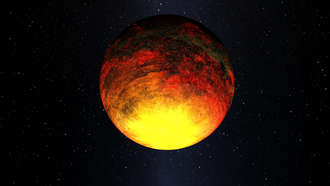Planets Galore!

The planet Kepler 10-b
Planets are everywhere! A team of scientists operating NASA’s Kepler Space Telescope announced the detection of an astounding number of new planets — 1,235.
In a front page article in the New York Times, reporter Dennis Overbye quoted Geoff Marcy, the astronomer profiled in my book, PLANET HUNTER. Marcy called the findings “an extraordinary planet windfall, a moment that will be written in textbooks. It will be thought of as watershed.”
Although it will take years for Geoff Marcy and other astronomers on the Kepler science team to confirm the findings with telescopes on the ground, they think the numbers are 80-95% accurate.
But the shear number — which almost triples the amount of extrasolar planets known to date — is just one piece of the excitement. Some of the planets (68) are among the smallest found so far. They are only one and one quarter larger than Earth and may be rocky, just like our own planet. Of those detected, 54 lie in the habitable zone around their parent star. This area, often called the Goldilocks zone, is the area around a star where conditions are “just right” for liquid water, and possibly life.
Could these planets share the rich diversity of life we have on Earth? Although astronomers don’t think an Earth-like planet lies among these findings, the new planets were detected from only four months of data. However, Kepler, which was launched in March 2009, is a three and a half year mission, so there will be lots more data to analyze.
So stay tuned — Kepler may detect planets that are candidates for life!








